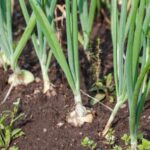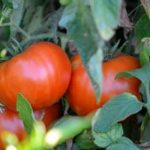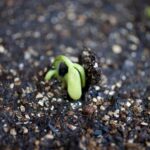Are you looking to add a touch of beauty to your vegetable garden? Or perhaps you want to enhance the vibrancy of your flower beds with some practicality? Combining vegetables and flowers in your gardening endeavors can offer a plethora of benefits that go beyond just aesthetics. In this article, we will delve into the world of vegetable flower gardening, exploring the advantages, considerations, and techniques for successful co-cultivation.
When it comes to growing vegetables and flowers together, not only does it create a visually appealing garden, but it also promotes biodiversity. By incorporating both types of plants, you can attract beneficial insects, pollinators, and natural predators that contribute to a healthy ecosystem within your garden. This symbiotic relationship not only enhances the overall health of your plants but can also increase yields and reduce the need for chemical interventions.
Furthermore, companion planting vegetables and flowers can help improve soil quality by providing natural pest control, weed suppression, and nutrient cycling. For example, certain flowers like marigolds can help deter harmful pests while promoting the growth of vegetables like tomatoes.
Understanding which plants work well together and how they complement each other’s needs is essential in creating a thriving vegetable flower garden. In the following sections, we will explore the best practices for selecting compatible plant pairings and maintaining a flourishing garden throughout the growing season.
Choosing the Right Vegetables and Flowers for Companion Planting
When it comes to companion planting in a vegetable and flower garden, selecting the right combination of plants is crucial for a successful and thriving garden. Certain vegetables and flowers have symbiotic relationships that benefit each other, such as deterring pests, attracting pollinators, and improving soil health.
One popular example of companion planting is the Three Sisters trio of corn, beans, and squash. The corn provides support for the beans to climb, while the beans add nitrogen to the soil which benefits the squash.
Vegetables for Companion Planting
When choosing vegetables for companion planting with flowers, consider plants that have similar growing requirements and complementary benefits. For instance, planting carrots alongside tomatoes can help repel pests like aphids and whiteflies that are often attracted to tomatoes. Similarly, growing basil near tomatoes not only enhances the flavor of tomatoes but also helps ward off tomato hornworms.
Flowers for Companion Planting
Incorporating flowers into your vegetable garden not only adds beauty but also serves practical purposes. Marigolds are known for their ability to repel nematodes in the soil, making them excellent companions for crops like tomatoes, peppers, and potatoes. Nasturtiums attract beneficial insects like ladybugs and hoverflies which prey on aphids and caterpillars, providing natural pest control in your garden.
By carefully selecting vegetables and flowers that complement each other’s growth habits and benefits, you can create a harmonious and productive garden that is not only visually appealing but also sustainable in terms of pest management and soil health. Experiment with different combinations to find what works best in your unique gardening environment.
Understanding the Basics of Gardening
When it comes to successful vegetable flower gardening, understanding the basics of soil preparation and planting is crucial. The quality of your soil will greatly impact the health and growth of your plants. It is essential to ensure that your garden bed has good drainage, aeration, and nutrient content to support the growth of both vegetables and flowers. Testing your soil pH levels can also help you determine if any amendments are needed to optimize plant growth.
Soil Preparation
Before planting your vegetables and flowers, it’s important to prepare the soil properly. Start by clearing the area of any weeds or debris that could hinder plant growth. Incorporating organic matter such as compost or aged manure can improve soil structure and fertility. Loosen the soil with a shovel or tiller to allow roots to penetrate easily. Additionally, adding a layer of mulch on top of the soil can help retain moisture, suppress weeds, and regulate temperature.
Planting
When it comes to planting vegetables and flowers together, consider their specific sunlight and spacing requirements. Some plants may thrive in full sun while others prefer partial shade, so be mindful of their individual needs when planning your garden layout.
Make sure to follow spacing recommendations on seed packets or plant labels to avoid overcrowding, which can lead to competition for resources. Planting taller vegetables like tomatoes or trellised cucumbers at the back of a bed will prevent them from shading out shorter flowering plants.
Proper planting depth is also important for the success of your garden. Most vegetable seeds should be planted at a depth equal to 2-3 times their diameter, while flower seeds may vary in their requirements.
Transplants should be set in the ground at a depth that covers their root ball completely. Water newly planted vegetables and flowers thoroughly to help settle the soil around their roots and provide them with essential hydration as they establish themselves in their new home.
Tips for Maintaining a Healthy Garden
Maintaining a healthy garden requires consistent care and attention to the needs of your plants. Proper watering, fertilizing, and mulching are essential elements in ensuring that your vegetables and flowers thrive in harmony. Here are some tips to help you maintain a healthy garden:
- Watering: It is crucial to water your vegetable flower garden regularly, especially during hot weather or dry spells. Make sure to water deeply to encourage strong root growth and prevent shallow roots. Water in the morning to reduce evaporation losses, and avoid overhead watering to prevent foliage diseases.
- Fertilizing: Providing proper nutrients is essential for the health and growth of your plants. Consider using organic fertilizers like compost, manure, or natural plant-based fertilizers to feed your plants without harmful chemicals. Be sure to follow instructions on the fertilizer package to avoid over-fertilization.
- Mulching: Mulching helps conserve moisture in the soil, suppresses weeds, regulates soil temperature, and adds organic matter as it decomposes. Use organic mulches like straw, wood chips, or leaves around your plants to improve soil structure and promote a healthier environment for vegetables and flowers.
By following these tips for maintaining a healthy garden through proper watering, fertilizing, and mulching practices, you can ensure that your vegetable flower garden remains vibrant and productive throughout the growing season. Remember that consistency is key when caring for your plants, so make it a regular part of your gardening routine to check on their needs and provide the necessary care for optimal growth.
Dealing With Pests and Diseases in a Vegetable Flower Garden
In addition to companion planting, practicing good hygiene in the garden can help reduce the spread of diseases among plants. It’s important to regularly inspect your vegetable flower garden for any signs of disease, such as yellowing leaves, mold growth, or unusual spots on plant foliage.
Promptly remove any infected plants or portions of plants to prevent the spread of disease to other plants in the garden. Proper spacing between plants is also crucial as it allows for better air circulation, reducing the likelihood of fungal diseases taking hold.
Furthermore, using organic pest control methods can be beneficial in managing pest problems without introducing harmful chemicals into your garden. Natural remedies like neem oil spray or insecticidal soap can help control common pests like aphids, caterpillars, and mites without harming beneficial insects or pollinators.
Introducing beneficial insects such as ladybugs or lacewings can also aid in controlling pest populations naturally. By implementing these strategies and staying vigilant about monitoring your vegetable flower garden, you can effectively deal with pests and diseases while promoting a healthy growing environment for your plants.
| Beneficial Insects | Organic Pest Control Methods |
|---|---|
| Ladybugs | Neem oil spray |
| Lacewings | Insecticidal soap |
Harvesting and Enjoying the Fruits of Your Labor
As you tend to your vegetable and flower garden, the joy of harvesting and enjoying the fruits of your labor is a rewarding experience. There is something special about picking fresh produce straight from your own backyard. When it comes to harvesting in a vegetable flower garden, timing is key.
Vegetables like tomatoes, cucumbers, and zucchinis should be harvested when they are ripe to ensure the best flavor and quality. Flowers such as zinnias and sunflowers can be picked when they are fully bloomed for vibrant floral arrangements.
One important tip for successful harvesting is to check your garden regularly. Different vegetables have specific harvest times, so it is essential to keep an eye on the progress of your plants. For example, leafy greens like lettuce should be harvested when they are young and tender before they bolt or become bitter. Additionally, flowers like marigolds and daisies should be picked frequently to encourage continuous blooming throughout the season.
To extend the enjoyment of your harvest, consider preserving excess produce by canning, freezing, or drying them for later use. Vegetables like peppers can be chopped and frozen for use in soups or stir-fries during the winter months. Flowers such as lavender can be dried to make fragrant sachets or potpourri. By taking these extra steps, you can savor the flavors of your garden long after the growing season has ended.
| Harvesting Tips | Benefits |
|---|---|
| Check Garden Regularly | Ensures freshness and quality |
| Preserve Excess Produce | Extends enjoyment beyond the growing season |
Creative Ways to Incorporate Vegetables and Flowers in Your Landscape Design
When it comes to incorporating vegetables and flowers in your landscape design, the possibilities are endless. By combining the beauty of flowers with the practicality of vegetables, you can create a visually stunning and productive garden that enhances your outdoor space. Here are some creative ways to integrate both elements seamlessly:
- Intermingle Vegetables and Flowers: One way to achieve a harmonious blend of vegetables and flowers in your landscape design is by interplanting them throughout your garden beds. This not only adds visual interest but also helps in maximizing space and attracting beneficial insects.
- Create Edible Borders: Instead of traditional shrubs or hedges, consider planting edible border plants like kale, chard, or lettuce alongside colorful flowers such as marigolds or petunias. This not only adds a pop of color but also provides you with fresh produce right at your doorstep.
- Vertical Gardening: Take advantage of vertical space by growing climbing vegetables like beans or peas on trellises or arbors that are adorned with vibrant flowering vines such as morning glories or nasturtiums. This not only saves space but also creates a visually appealing display.
By incorporating these creative ideas into your landscape design, you can enjoy the benefits of both vegetables and flowers while creating a beautiful and functional outdoor space.
- Remember to plan ahead and consider the growth habits and sunlight requirements of each plant before designing your garden layout.
- Experiment with different combinations of vegetables and flowers to see which pairings work best together in terms of aesthetics and productivity.
- Don’t be afraid to think outside the box and get creative with unique plant placements, container gardens, or even vertical structures like living walls for a truly one-of-a-kind vegetable flower garden.
Sustainable Practices in Vegetable Flower Gardening
In conclusion, integrating vegetables and flowers in your gardening practices not only adds beauty to your landscape but also provides several benefits such as maximizing space, attracting pollinators, and improving soil health. By choosing the right combination of plants for companion planting, you can create a harmonious garden that thrives with minimal effort. Understanding the basics of gardening like soil preparation and planting is crucial for the success of your vegetable flower garden.
Maintaining a healthy garden involves proper watering, fertilizing, and mulching techniques to ensure that your plants receive essential nutrients and moisture. Additionally, addressing pests and diseases promptly is essential to prevent any damage to your crops and flowers. It is important to practice sustainable methods such as composting and recycling to reduce waste while nourishing your garden naturally.
As you harvest the bountiful produce from your vegetable flower garden, take time to appreciate the joys of gardening and the satisfaction of enjoying homegrown veggies and vibrant blooms. By incorporating vegetables and flowers into your landscape design creatively, you can create a visually appealing space that also serves a practical purpose. Embrace sustainable practices in your gardening endeavors to cultivate a greener garden for years to come.
Frequently Asked Questions
What Flowers Are Best to Plant With Vegetables?
Some flowers that are best to plant with vegetables include marigolds, nasturtiums, and calendula. Marigolds can help repel pests like nematodes, while nasturtiums can attract beneficial insects like predatory beetles.
Should Flowers Be Planted in Vegetable Garden?
Flowers should definitely be planted in vegetable gardens for various reasons. They can attract pollinators like bees and butterflies, leading to better fruit production in vegetables. Additionally, some flowers can help deter harmful pests from attacking crops.
What Are the Best Pollinator Flowers for Vegetable Gardens?
The best pollinator flowers for vegetable gardens are ones that attract a wide range of beneficial insects like bees and butterflies. Some good options include bee balm, lavender, and sunflowers. These flowers not only help with pollination but also add beauty to the garden.

If you’re looking to get into vegetable gardening, or are just looking for some tips on how to make your current garden better, then you’ve come to the right place! My name is Ethel and I have been gardening for years. In this blog, I’m going to share with you some of my best tips on how to create a successful vegetable garden.





